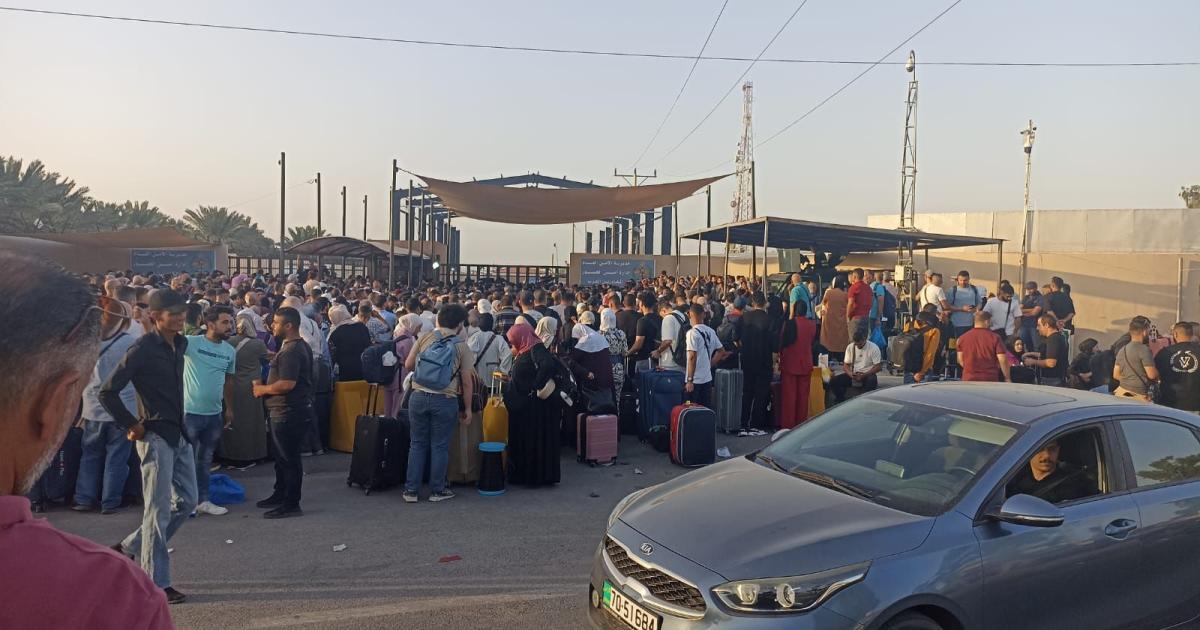Bridge Closure Turns West Bank Into Struggle Zone: Citizens And Drivers Face Humanitarian And Economic Crisis
In recent days, the King Hussein Bridge has witnessed repeated closures, due either to security measures or unilateral Israeli decisions, directly affecting both citizens and drivers, while significantly increasing travel costs and daily burdens.
The impact of these closures goes beyond delayed appointments or interrupted trips, leaving deep emotional and practical consequences for people's lives. One mother recounted losing the chance to bid farewell to her terminally ill daughter, saying,“My daughter came to see her mother in her final moments, and we didn't make it in time. I was crying uncontrollably, feeling utterly helpless.”
Another story involves a student returning from the UK after two years, expressing her heartbreak at being prevented from seeing her family:“I arrived at the bridge and was told I couldn't cross. My heart broke-I had waited eagerly for this moment, and in an instant, everything was lost.”
The consequences are not limited to emergencies. People with daily mobility challenges, such as individuals with disabilities, face long waits to reach their families, while employees often lose workdays and incur additional expenses due to delays. These stories reflect the human face of what many see as a temporary closure, revealing the growing hardships imposed by any sudden interruption in travel between Jordan and the Palestinian territories.
A Vital LifelineThe King Hussein Bridge serves as the main land crossing linking Jordan to the West Bank. Passage is coordinated between Jordanian authorities and Israeli officials on the opposite side. Statistics from 2024 show that approximately 1.74 million travelers crossed Karameh Bridge in both directions, highlighting its vital role before subsequent events further disrupted traffic. Reports indicate weekly peaks of more than 25,000 travelers, while operators and drivers estimate around 3,000 passengers daily during peak days, with accumulated travel claims reaching 8,500 travelers over two days following closures.
Struggles of DriversBus drivers are among the most affected, relying on the bridge for daily income. Any sudden closure threatens their livelihoods and intensifies economic pressures.
Hudhaifa Al-Tamrawi, a bus driver at the bridge, told Amman Net that travelers bear high costs, sometimes exceeding 100 Jordanian dinars, especially when returning to Jordan due to permit fees and travel expenses. He added that Israeli authorities often send passengers back without allowing them to cross, leaving drivers to cover transportation costs from both sides.
“Closures mean lost income,” Al-Tamrawi explained.“Passenger numbers drop, and travelers calculate every step before boarding, leading to a significant decrease in trips. Vehicles on routes such as Amman-Zarqa-Irbid barely complete one trip a day. The past four days, operations have been far from normal, directly affecting our livelihoods.”
Direct and Indirect Economic ImpactsAl-Tamrawi highlighted that the number of trips lost during closures is substantial. On Thursday alone, out of 188 buses and vehicles operating at the bridge, only a quarter transported passengers due to sudden closures and returns. From Thursday until Monday, public transport barely operated, forcing people to wait for hours and causing significant financial losses, especially with fuel costs.
Communication with travelers who book trips has become extremely difficult, as many are shocked to learn the crossing remains closed.“When passengers ask, 'Can you take me across?' I have to explain it's at their own risk. As public transport drivers, we cannot take responsibility under these conditions,” he added.
After the reopening, pressure on the bridge remains enormous, with around 3,000 travelers daily and up to 8,500 passengers queued over two days, creating immense strain on drivers and the overall system.
Urgent Need for SolutionsDrivers are calling for better traffic organization, including dedicated parking in the Shuna al-Janoubiyah area to reduce congestion and interference from unauthorized private vehicles. The Ministry of Transport attempted to ease the crisis by increasing buses from 20 to 30, but both drivers and citizens stress that the problem runs deeper, demanding comprehensive solutions that address both humanitarian and economic dimensions.

Legal Disclaimer:
MENAFN provides the
information “as is” without warranty of any kind. We do not accept
any responsibility or liability for the accuracy, content, images,
videos, licenses, completeness, legality, or reliability of the information
contained in this article. If you have any complaints or copyright
issues related to this article, kindly contact the provider above.
Most popular stories
Market Research

- Kintsu Launches Shype On Hyperliquid
- Barunson, Studio Behind Parasite, To Launch Nplug IP Remixing Platform On Story And Bring Flagship IP Onchain
- Moonbirds And Azuki IP Coming To Verse8 As AI-Native Game Platform Integrates With Story
- Leverage Shares Launches First 3X Single-Stock Etps On HOOD, HIMS, UNH And Others
- Alchemy Markets Launches Tradingview Integration For Direct Chart-Based Trading
- Dexari Unveils $1M Cash Prize Trading Competition






















Comments
No comment